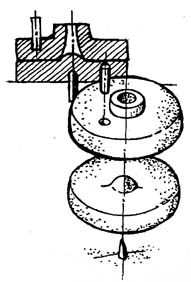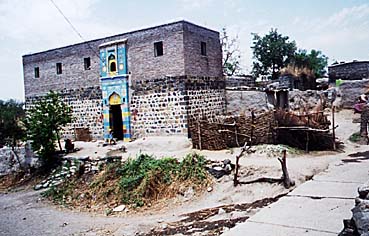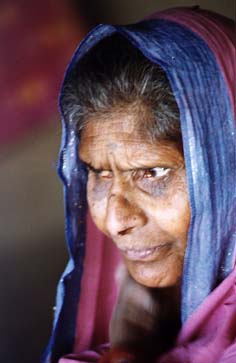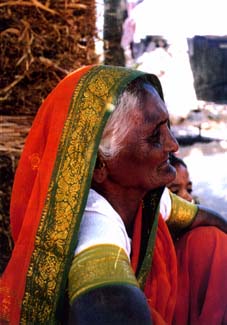| . |
Autobiographies
Malavika Talukder |
|
Communication Design
Department
of Video
National Institute of Design (NID, Ahmedabad) |
. |
This project is in association with the Centre for Cooperative Research in
Social Sciences (CCRSS, Pune) and is part of the ongoing
project "Unfettered Voices" which they are
conducting in collaboration with
Centre de Sciences
Humaines (CSH, New Delhi).
"Unfettered voices" is a project to extensively document the
specific forms of expression and communication peculiar to women in rural areas
of Maharashtra. While doing extensive documentation, social animators felt the
need to come back to a few individuals who seem to be different within their
society. These persons seem to be eager to pass on their personal experience,
something that is not very easy within their existing social structure. So far
the process of collection of these songs has been through recording groups of
women grinding and the transcription of their words. Among these are women who
hold a larger repertory of grindmill songs and these sessions do not do them
justice.
 |
The project "Autobiographies" is a partial response to this need.
It takes advantage of the accuracy and reflexivity of audiovisual media; at the
same time, paradoxically, it is an outsider's view of an intimate expression of
this society.
The project attempts to be a representation of an individual's motivations,
vision of life and patterns of communication. It also portrays the various
social forces and events in the individual daily existence that appear as
messages in their songs. |
This could go deeper and provide new information about the emergence of
female identity and individuality in a rural society.
Methodology
The methodology for dealing with this theme is video and sound recordings in
which various patterns of communication may be observed. |
 |
Some audio and visual materials had already been collected in different
contexts and lent themselves to editing for this purpose. The challenge lied
in making the film more transparent, autobiographical -- where the situation is
naturally catalysed and not prompted or engineered. This involved close
interaction with the social animators and the characters involved.
The film
The film "Autobiographies" became my diploma project at NID under
the guidance of Akhil Succena and consultancy of Tridip Suhrud. Shooting was
done in Spring 1997, using Hi-8 video format, and the final editing was realised
in Beta format during the rest of the year.
The information and anecdotes available were well organised under women's
issues, gender studies, of persons and their poetry, the grindmill and Bhakti,
the peasant women and their songs. My curiosity was aroused by the women
themselves. What has brought on this poetry, the pain? How did they live, what
were they all about? This developed into the idea of doing portraits of these
peasant women. Perhaps autobiographical of women who could speak about their
lives and the various social forces and events in their daily existence, that
appear as messages in their songs.
My curiosity was aroused by these strong, resilient women who seem almost
invisible in the texts of their songs. The film attempts to portray two women
from Parbhani district (Marathwada) who seem to be different within their
society.
|
The approach was to capture some of the various social forces and events in
their daily existence that appear as messages in their songs.
Firstly, Gangubai the leper lady, a poet and a singer with an exceptional
voice, from village Tadkalas.
|

Ambore Gangu (photo Andréine Bel) |
|
Listen to voice
I take your name, God,
Every morning and evening,
And
forget myself. |
Secondly, Dharubai and Parobai, two sisters from Savargaon who fought for
centre stage when Bernard Bel was shooting a session in 1996. They started
singing their own songs and forced a group of young women to silence.
However Parobai could not be included, since she had left her village and
was in hiding due to domestic violence.
That left Dharubai and Gangubai.

Jagatap Dhura "Dharubai" (photo
Andréine Bel) |
My initial assumption of portraying the two women, who were different yet
marginalised in their society, was proved incorrect as I went on. Dharubai is
very much part of the social hierarchy as a dai (traditional midwife),
money-lender and land owner. Gangubai, too is not shunned and well integrated
into her community by her melodious voice and repertoire songs influenced by the
Bhakti cult.
As I got to know them better, both these women, though physically so apart,
shared a zeal to keep the tradition of grindmill songs alive. |
New Delhi, December 1997
Return to home page of Centre
for Cooperative Research in Social Sciences (CCRSS, Pune)



